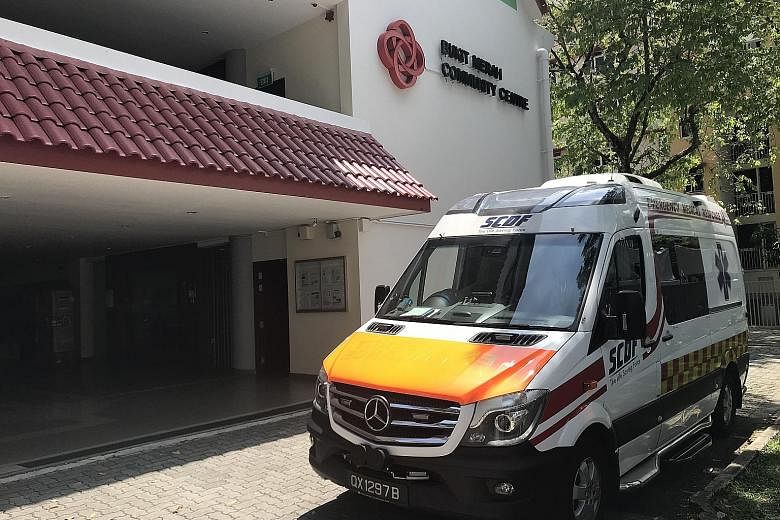The Singapore Civil Defence Force (SCDF) is implementing more measures to better respond to life-threatening emergencies as it continues to receive more calls for help.
For life-threatening cases involving cardiac arrests, more emergency responders will be dispatched to administer high-performance cardiopulmonary resuscitation (CPR) to improve the patient's chances of survival.
To do so, additional emergency medical technicians will be deployed on Red Rhino vehicles, fire engines or other fire medical vehicles (FMVs), in addition to ambulances and fire bikes.
"So, don't be surprised if you see seven to eight SCDF officers performing CPR on one patient. It is not a waste of resources - this is actually the norm in other developed countries," SCDF public affairs director Abdul Razak Abdul Raheem said at a briefing yesterday.
As more in-depth medical skills are needed to conduct high-performance CPR, the SCDF is training emergency medical technicians on the procedure, which will be rolled out progressively over the next three years.
To help these responders arrive at the scene faster, the SCDF is working towards allowing more emergency vehicles - including fire engines, red rhinos and FMVs - to skip red traffic lights and make U-turns at non-designated junctions from April 1.
Currently, only SCDF ambulances are allowed to do so under the Road Traffic Act.
Statistics released by the SCDF yesterday showed a rise in the number of 995 calls by 2.8 per cent to 187,607 last year, which works out to about 500 calls daily.
Of these, 169,653 were emergencies, a 3.7 per cent jump from the previous year.
Three in four of the emergencies were medical-related, such as heart attacks and unconsciousness, while about 18 per cent were trauma cases from industrial accidents, falls and assaults. The remaining calls were related to road traffic accidents.
Nearly half of the emergency calls were related to the elderly aged 65 and above - the highest proportion among all age categories.

However, the number of non-emergency and false-alarm calls dipped by 9.6 per cent to 17,954 calls last year - the first decline in at least five years.
This is a clear indication that members of the public are becoming more aware that they should not call 995 in a non-emergency case, said Assistant Commissioner Abdul Razak.
Still, the SCDF had to respond to around 50 non-emergency or false-alarm calls daily. It urged the public to call 995 only in an emergency.
Director of operations Daniel Seet said: "This will ensure that the SCDF's resources are utilised only for emergency cases."
Efforts to make better use of the SCDF's resources intensified in April 2017 with the introduction of a tiered-response framework.
It prioritises calls based on the callers' answers to a series of questions to determine the severity of the patients' medical conditions, with tiers ranging from severe to minor emergencies. This allows the SCDF to deploy resources matching the seriousness of each call.
Previously, all emergency medical cases were responded to on a first come, first served basis within the standard 11 minutes.
With the tiered framework, the SCDF responded to 82 per cent of life-threatening cases last year within eight minutes by deplo-ying a fire bike and an ambulance simultaneously.
In cases of minor emergencies that are less time sensitive, the SCDF said response time will be longer.
For non-emergency cases, callers will be advised to seek treatment from their family doctor or general practitioner at nearby clinics.


